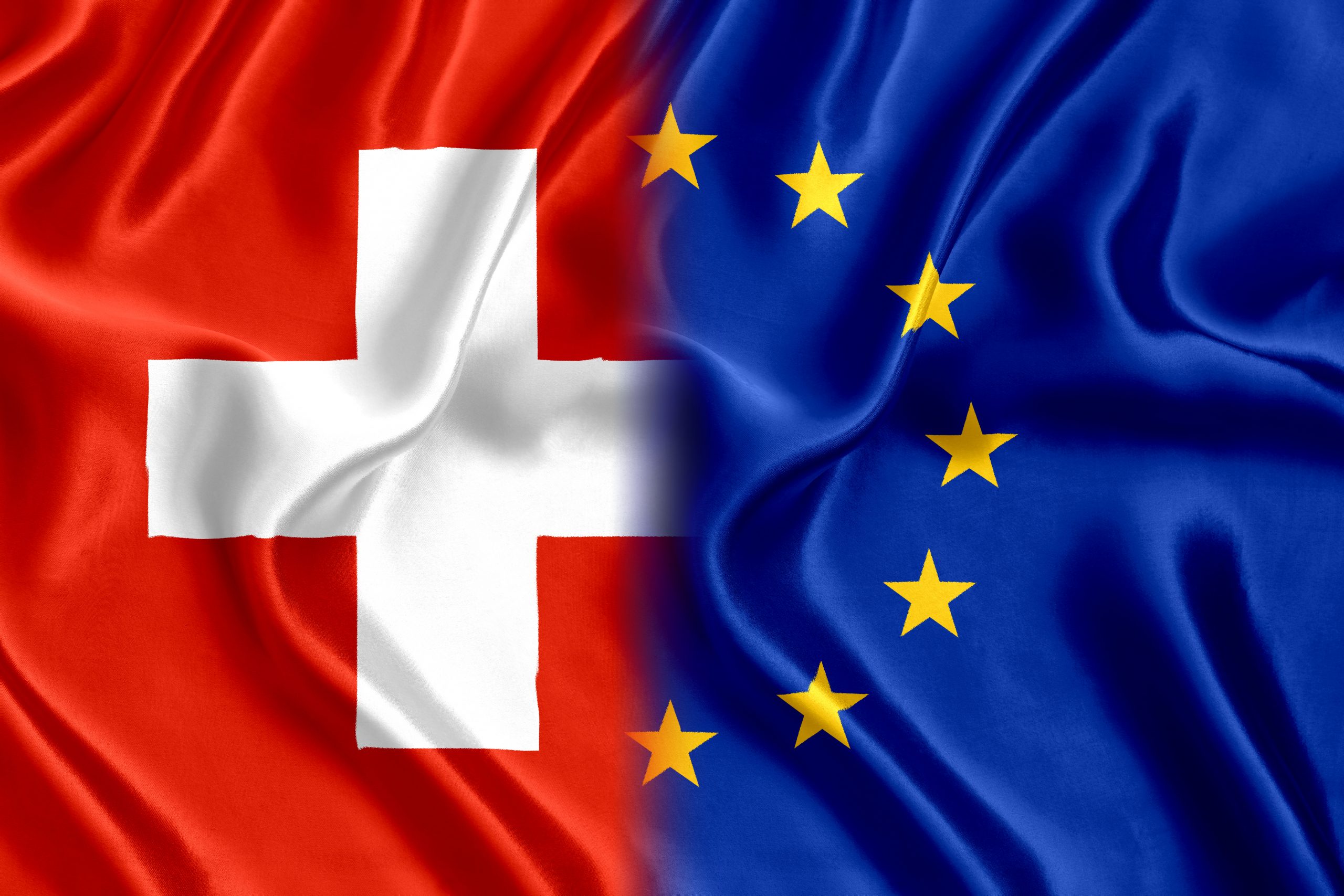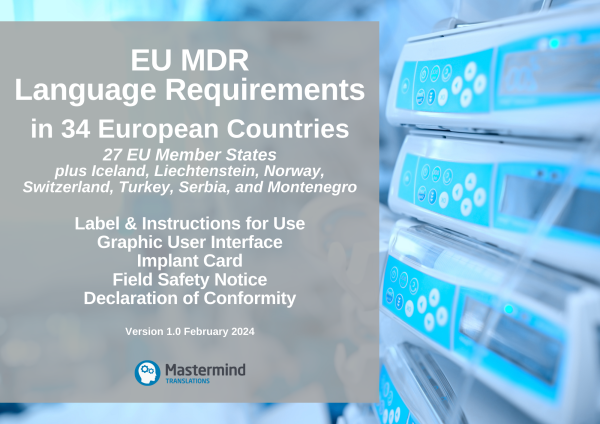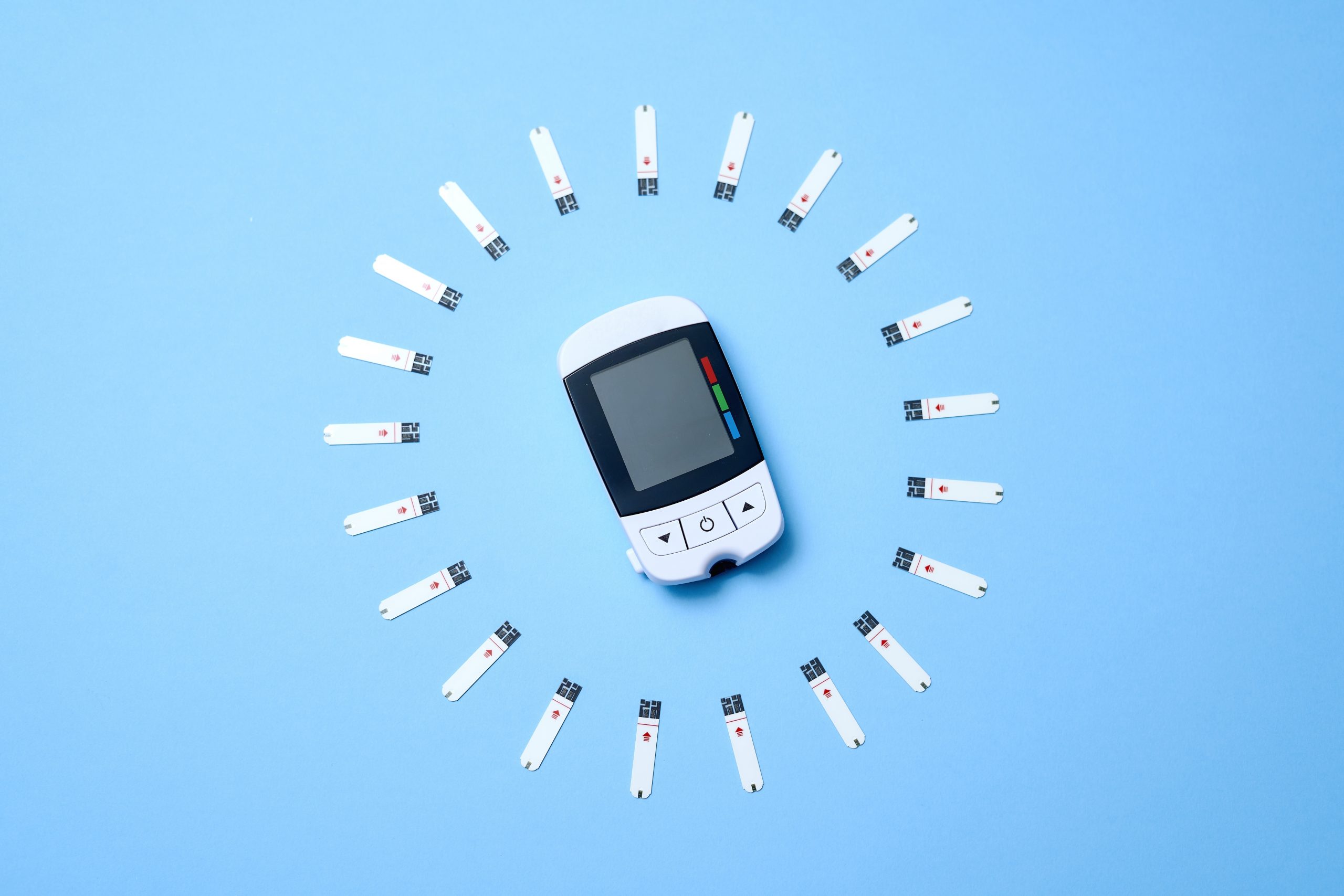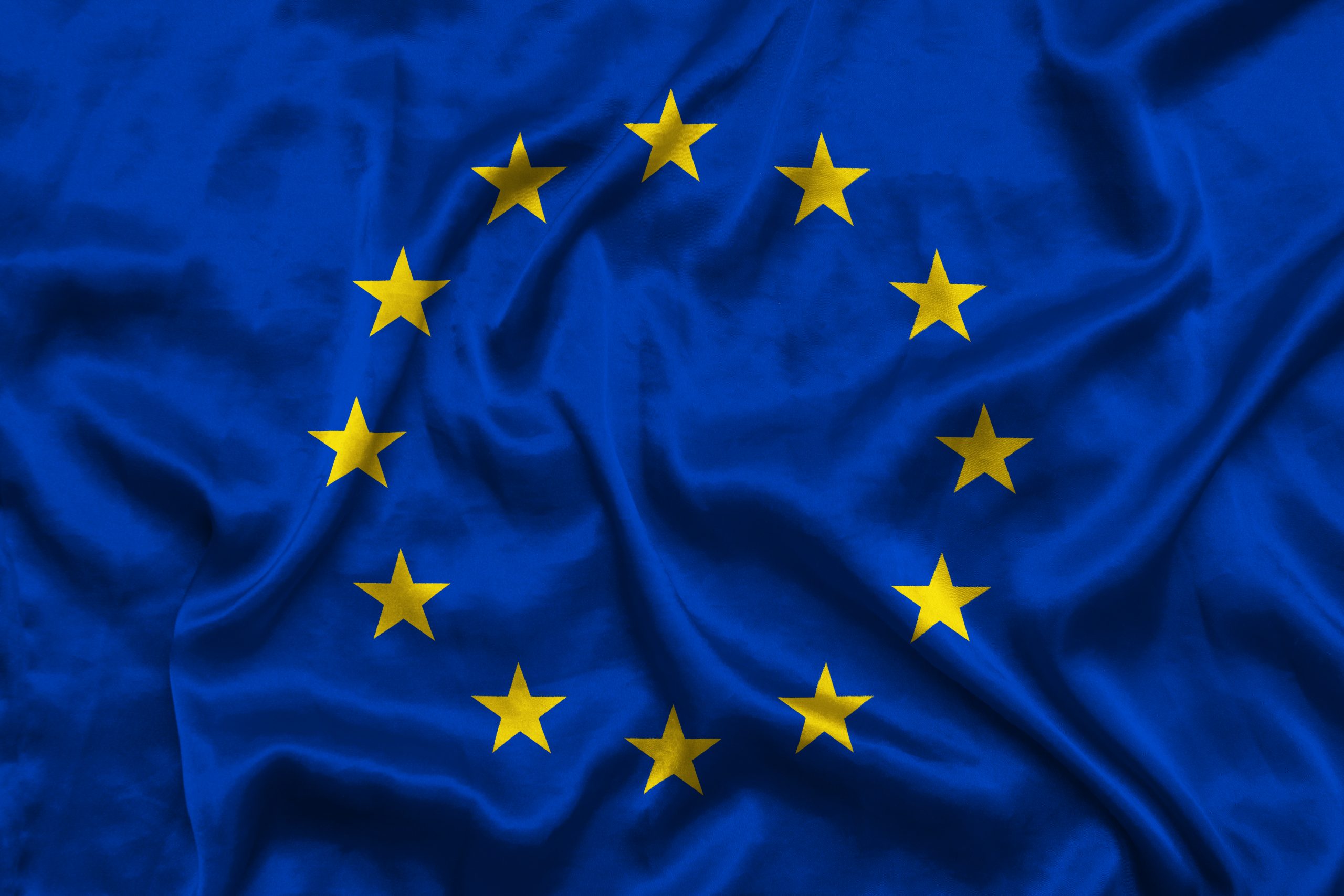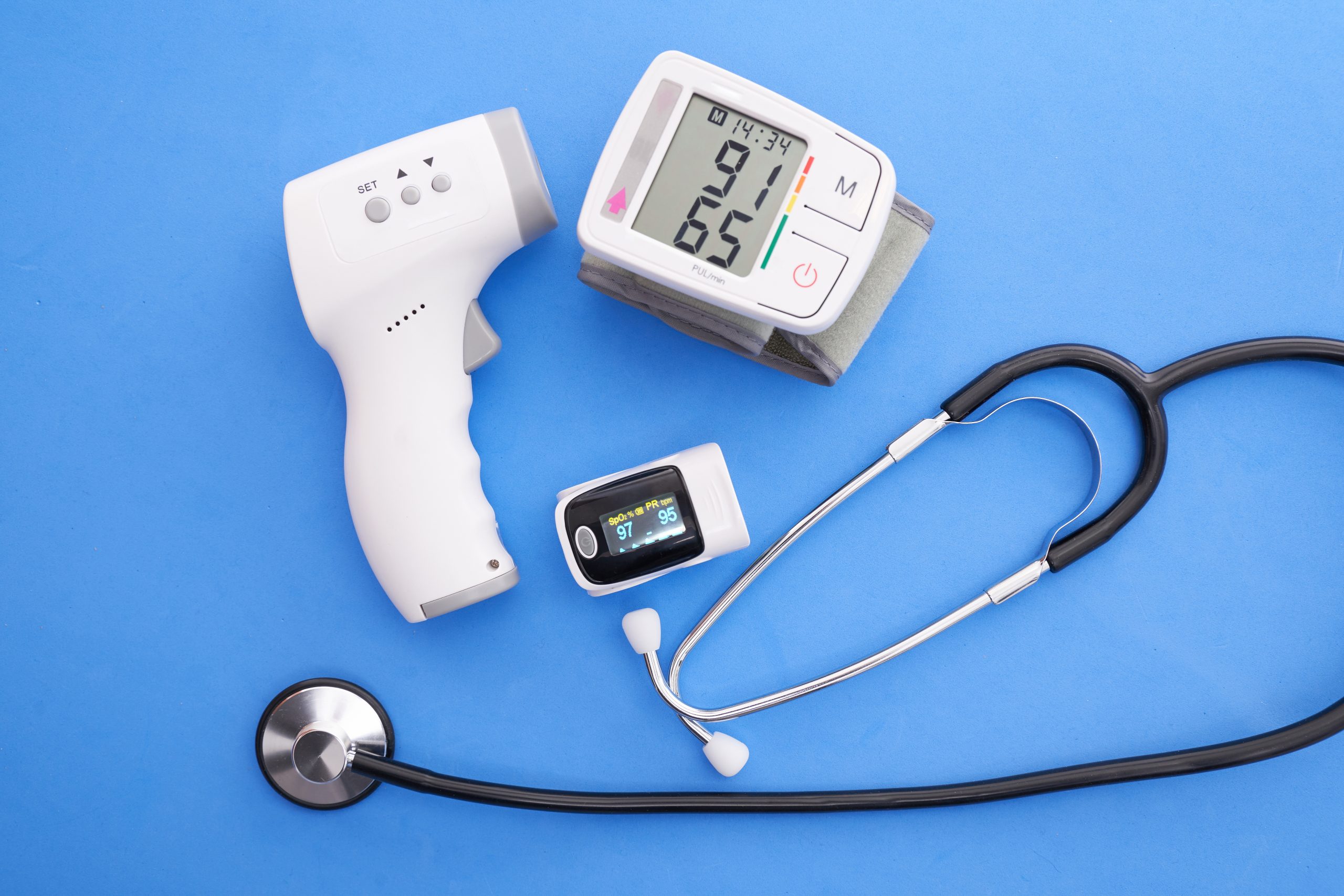Like many other European countries, Switzerland strongly relies on imports to meet a growing demand for innovative medical devices. In order to facilitate international trade, the country has aligned its medical devices legislation with the EU MDR and the EU IVDR. This harmonisation also covers language requirements for information supplied with medical devices placed on the trilingual Swiss market. In this article, we discuss key provisions for the mandatory language requirements for devices in Switzerland, and what they mean for manufacturers and importers.
Switzerland imports as much as 54% of its medical devices from the EU. In order to avoid regulatory gaps with its main trade partner, since 2001 Switzerland has sought to harmonise its medical devices legislation with that of the EU. The most recent revision of Swiss medical devices law was based on the new EU Medical Device Regulation (MDR) 2017/745/EU and EU In Vitro Diagnostic Medical Device Regulation (IVDR) (EU) 2017/746, and includes, among many other new measures, the mandatory language requirements for devices in Switzerland.
Before we discuss the language requirements for medical devices placed on the Swiss market in more detail, it will be helpful to understand the wider context of these legislative changes first.
Why has Switzerland aligned its medical devices legislation with that of the EU?
By way of background, Switzerland is a European country, but it is not a member of the EU or the European Economic Area (EEA). Having repeatedly declined calls to join both, Switzerland has instead opted for a number of bilateral agreements with the EU in order to secure access to its internal market.
In 2002, Switzerland and the EU concluded a mutual recognition agreement (MRA) under which industrial goods complying with the regulations applicable in the market of one party were freely accepted in the market of the other. This MRA was designed to remove technical barriers on as much as two-thirds of the industrial products, including medical devices, traded between the EU and Switzerland. Significantly, this barrier-free access to the EU internal market for medical devices rests on the premise that medical devices legislation of Switzerland and that of the EU are equivalent.
For this reason, previous EU directives on medical devices, including active implantable medical devices and in vitro diagnostic medical devices (IVDs), and their subsequent revisions were incorporated into the Swiss Medical Devices Ordinance (MedDO). Following the recent evolution of the EU regulatory framework, Switzerland’s medical devices legislation had to be aligned with the EU MDR and IVDR, in order to ensure that it was still deemed equivalent to that of the EU.
This adaptation was gradual, and corresponded to the transition periods in the EU. More specifically, the provisions of the EU MDR were incorporated in the significantly revised MedDO and the new Ordinance on Clinical Trials with Medical Devices (ClinO-MD), both entering into force on 26th May 2021. In a similar fashion, the provisions of the EU IVDR were transferred to the new Swiss Ordinance on In Vitro Diagnostic Medical Devices (IvDO), and individual specific rulings related to IVDs were adopted in the ClinO-MD. These provisions entered into force on 26th May 2022, thereby completing the harmonisation of Swiss medical devices legislation with that of the EU.
However, in order for Switzerland to maintain its participation in the EU internal market for medical devices, Chapter 4 Medical Devices in Annex 1 of the MRA must be revised to reflect the new EU regulatory regime for medical devices. Attempts to update it collapsed in 2021 due to unresolved issues with the Institutional Framework Agreement (InstA), another agreement between Switzerland and the EU with a wider scope. With the lapsed MRA, Switzerland is currently considered by the EU as a third country for medical devices, which means that medical devices placed on the EU market can no longer move freely to the Swiss market.
Which languages are accepted under the language requirements for devices in Switzerland?
The language requirements for devices in Switzerland are based on the corresponding provisions set out in the EU MDR and IVDR. They cover product information, the implant card, the certificate of conformity, and the declaration of conformity.
Languages required for product information
Product information, which comprises the label and instructions for use (IFU), for medical devices placed on the Swiss market must be written in German and French and Italian.
MedDO, Article 16
IvDO, Article 15
Product information
2. It must be written in all three official languages of Switzerland. Symbols established by means of technical standards may be used to replace written statements.
The same national language requirements apply to IVDs for self-testing and near-patient testing. Product information supplied with those devices must be in German and French and Italian.
IvDO, Article 15
8. For devices for self-testing or for near-patient testing, the information stated in Chapter III of Annex I to EU-IVDR should be easily understandable and written in the three official languages.
Languages required for the implant card
Similarly, the implant card must be provided in German and French and Italian.
MedDO, Article 20
2. The implant card must drawn up in all three official languages of Switzerland.
Languages required for the certificate of conformity and the declaration of conformity
Language requirements also apply to information not intended for the user, but are less stringent. The certificate of conformity can be issued in German or French or Italian or English.
MedDO, Article 25
IvDO, Article 21
2. The certificates must be issued in one of the three official languages of Switzerland or in English.
Similarly, the declaration of conformity can be presented in German or French or Italian or English.
MedDO, Article 29
IvDO, Article 25
2. […] It must be written in one of the three official languages of Switzerland or English or translated into one of these languages.
Are there any exceptions to the national language requirements for devices in Switzerland?
Product information for devices intended for professional use
Like many other European countries with high levels of proficiency in English, Switzerland has opted for more flexible language requirements for the information accompanying devices intended exclusively for healthcare professionals. The national language requirements are also waived for custom-made devices, as well as for devices manufactured and used solely within healthcare institutions. Those manufacturers who meet specific conditions can provide product information with their devices in German or French or Italian or English. Nevertheless, upon request, additional information must be made available to the user in German or French or Italian.
MedDO, Article 16
IvDO, Article 15
3. The product information may be provided in fewer than the three official languages of Switzerland or in English, provided that:
a. the device is supplied exclusively to healthcare professionals or is a custom-made device or concerns a medical device in accordance with Article 9;
b. the user meets the necessary professional and linguistic requirements and qualifications, and is in agreement;
c. the protection of patients, users and third parties is ensured; and
d. the efficacy and performance of the medical device are not placed at risk.
4. If requested, additional information must be provided to users in one of the official languages of Switzerland.
Exemptions
In certain special circumstances, manufactures can be exempt from the national language requirements for product information that are otherwise mandatory for their devices.
MedDO, Article 22
1. On a duly justified request, Swissmedic may authorise the placing on the market and putting into service of a specific device the use of which is in the interests of public health or patient safety or health even though:
a. the relevant conformity assessment procedure in accordance with Article 23 has not been carried out; or
b. the language requirements in Article 16 paragraph 2 have not been met.
IvDO, Article 18
1. On a duly justified request, Swissmedic may authorise the placing on the market and putting into service of a specific device the use of which is in the interests of public health or patient safety or health even though:
a. the relevant conformity assessment procedure in accordance with Article 19 has not been carried out; or
b. the language requirements in Article 15 paragraph 2 have not been met.
Where can we find more information on the language requirements for medical devices, including any exemptions, in other European countries?
One of the most common questions from medical device manufacturers relates to which countries offer exemptions from their national language requirements and accept English instead. Detailed information on the languages accepted for product information under the EU MDR language requirements in the 27 EU countries, Iceland, Liechtenstein, Norway, Switzerland, Turkey, Serbia, and Montenegro can be found in our EU MDR Language Requirements Table 2024. This resource includes English summaries of national legislations detailing various exceptions and conditions, along with clickable links to the official sources. Regularly updated, this resource is available from our online store and features dedicated sections for the label/IFU, graphical user interface (GUI), implant card, field safety notice (FSN), and declaration of conformity (DoC). Where applicable, it also integrates the information published by the European Commission in January 2024.
Please note that the information provided in this article is for guidance only and does not constitute professional regulatory advice. In the case of specific questions related to regulatory compliance, we recommend seeking assistance from a QA/RA specialist or a relevant competent authority.


